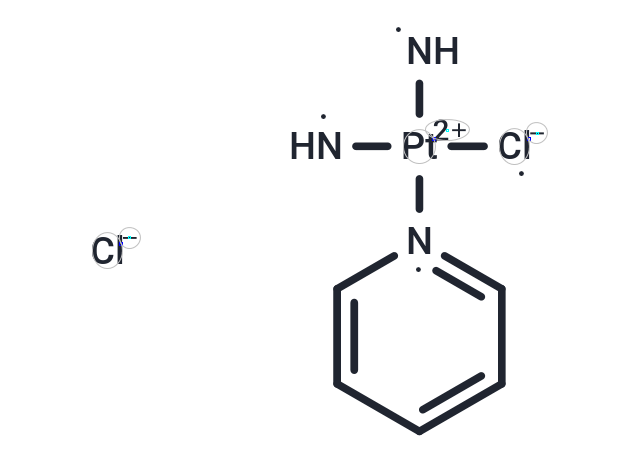Shopping Cart
Remove All Your shopping cart is currently empty
Your shopping cart is currently empty
cDPCP is a platinum-containing DNA-crosslinking agent.1Unlike cisplatin or oxaliplatin , cDPCP forms monofunctional DNA adducts. It is transported into cells by organic cation transporter 1 (OCT1) and OCT2, inhibiting proliferation of MDCK cells expressing the human transporters with IC50values of 8.1 and 1.5 μM, respectively. cDPCP inhibits RNA polymerase II-mediated transcription in a reporter assay using HeLa cells. It increases survival in murine S180 sarcoma and P388 leukemia models when administered at doses of 40 and 80 mg/kg, respectively.2

| Pack Size | Price | USA Warehouse | Global Warehouse | Quantity |
|---|---|---|---|---|
| 1 mg | $296 | 35 days | 35 days |
| Description | cDPCP is a platinum-containing DNA-crosslinking agent.1Unlike cisplatin or oxaliplatin , cDPCP forms monofunctional DNA adducts. It is transported into cells by organic cation transporter 1 (OCT1) and OCT2, inhibiting proliferation of MDCK cells expressing the human transporters with IC50values of 8.1 and 1.5 μM, respectively. cDPCP inhibits RNA polymerase II-mediated transcription in a reporter assay using HeLa cells. It increases survival in murine S180 sarcoma and P388 leukemia models when administered at doses of 40 and 80 mg/kg, respectively.2 |
| Molecular Weight | 375.12 |
| Formula | C5H7Cl2N3Pt |
| Cas No. | 106343-59-3 |
| Smiles | [Cl-].[NH][Pt++]([NH])([Cl-])[N]1=CC=CC=C1 |c:6,8,t:4,^1:1,3,4,5| |
| Relative Density. | no data available |
| Storage | Powder: -20°C for 3 years | In solvent: -80°C for 1 year | Shipping with blue ice/Shipping at ambient temperature. |
| Solubility Information | H2O: Slightly soluble DMSO: Slightly soluble |
| Size | Quantity | Unit Price | Amount | Operation |
|---|

Copyright © 2015-2026 TargetMol Chemicals Inc. All Rights Reserved.